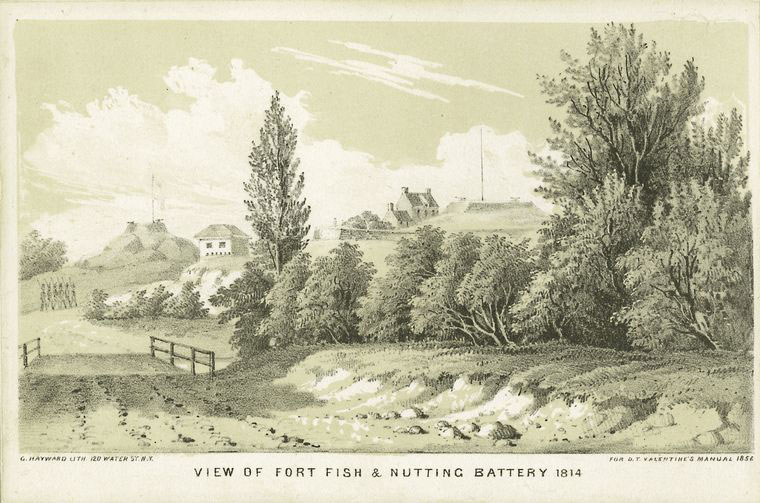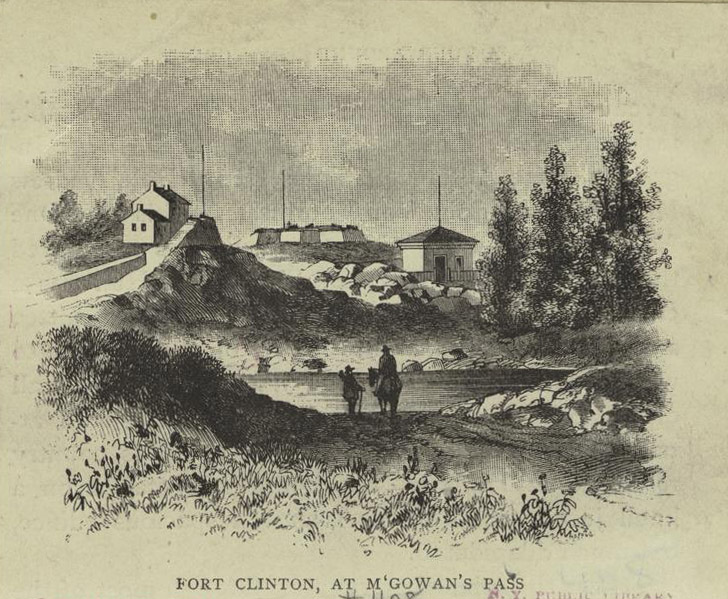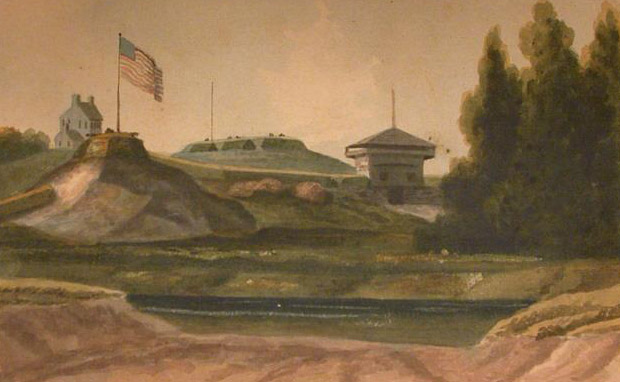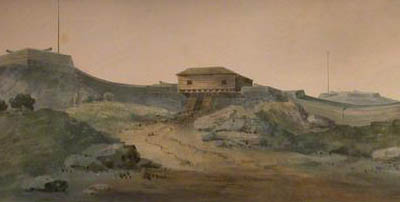The 1814 fortifications and gatehouse were thrown together in a few weeks, and this led to some higgledy-piggledy construction (as can still be seen in the last-surviving structure, Blockhouse No. 1 in the North Woods). It also led to a lot of rethinking and rebuilding, if illustrations are anything to go by.
This view below purports to show us the gatehouse, with Forts Clinton and Fish at left and center, and the McGowan house at left-rear, not far from Fort Fish.
But the gatehouse is a weirdly anthropomorphized thing, with two big eyes, a gaping mouth, and a kind of tam o’shanter hat up top.
It is an 1814 watercolor sketch by one of John Joseph Holland’s associates (possibly James Renwick, Sr., father of the famous architect). But see how different it is from Holland’s own rendering of the gatehouse:
Why the difference? The first painting is rougher and sketchier than the second, so we can suppose that the first one was an “artist’s conception” drawn up beforehand. Holland’s version, then, shows the finished product.
But there are even stranger pictures of the gatehouse. Below are views redrawn and published in the 1850s and 1890s:

 The “Nutting Battery” [sic] lithograph from the 1856 Valentine’s Manual is like a compromise between the watercolors up above: the gatehouse is not as squat as the one Holland painted, but not wearing a tam o’shanter either.
The “Nutting Battery” [sic] lithograph from the 1856 Valentine’s Manual is like a compromise between the watercolors up above: the gatehouse is not as squat as the one Holland painted, but not wearing a tam o’shanter either.
Then we have the etching from Felix Oldboy’s (J. F. Mines’s) A Tour Around New York, 1893. Here the gatehouse has shed all its roughhewn Natty Bumppo-ness and become an elegant little guardhouse, with front door and railing. We can only see the top level; the tunnel-like passageway through the gate is hidden from our view. Â Even more remarkably, the gatehouse is not on the Post Road (to the left), but on some side route branching off in a westerly direction, on our side of Fort Fish. It’s right where the switchback is today. The Post Road in the etching has high rails and a guardhouse, but no gatehouse.
Could this be a correct depiction? Hard to say. It might be based on an original drawing from 1814, but we haven’t seen any such drawing. Or it might be an imaginative reconstruction by an 1890s illustrator who knew East Drive’s switchback and figured it must have been around in 1814. The fact that the etching is titled, “Fort Clinton, at M’Gowan’s Pass,” and shows Fort Fish instead, is not a point in its favor.


